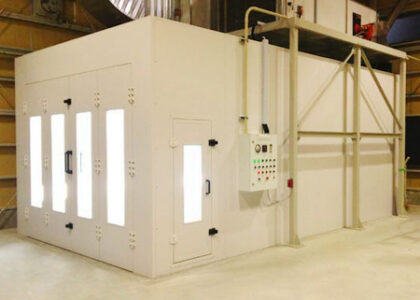Hydraulic cylinders, the unsung heroes of countless machines and applications, are the workhorses that convert hydraulic fluid pressure into linear mechanical force. These versatile actuators play a critical role in various industries, from construction and agriculture to manufacturing and transportation. Let’s delve into the current state of the hydraulic cylinder market, explore the factors driving its growth, and uncover the exciting opportunities it presents.
Get Exclusive Sample Copy of the Report: https://www.futuremarketinsights.com/reports/sample/rep-gb-14430
Current Scenario: A Market Under Pressure
The global hydraulic cylinder market is experiencing steady growth, fueled by several key trends:
- Rising Demand for Automation: The increasing use of automation in various industries necessitates reliable and powerful actuators like hydraulic cylinders for precise machine movements.
- Growth in Construction and Infrastructure: Hydraulic cylinders are crucial components in construction equipment like excavators, loaders, and cranes, leading to market growth as infrastructure development projects flourish globally.
- Focus on Efficiency and Productivity: Modern hydraulic cylinders offer improved efficiency and performance, contributing to faster operation cycles and higher productivity.
- Expansion of Manufacturing Industries: The growing manufacturing sector across various regions creates a significant demand for hydraulic cylinders in machinery and equipment.
- Advancements in Material Science: Development of lighter and stronger materials for cylinder components enhances performance and durability.
Benefits of Hydraulic Cylinders:
- High Power Density: Hydraulic cylinders can generate large forces in a compact size, making them ideal for demanding applications.
- Precise Control: Modern control valves enable precise control of force, speed, and direction of movement.
- Versatility: The variety of available types and configurations allows for adaptation to diverse applications.
- Durability: Hydraulic cylinders are built to withstand high pressures and harsh operating conditions.
- Low Maintenance: These robust actuators require minimal maintenance compared to some alternatives.
Types of Hydraulic Cylinders:
The market offers a diverse range of hydraulic cylinders to cater to specific application requirements:
- Single-Acting Cylinders: These utilize fluid pressure to extend the rod in one direction and rely on springs or external forces for retraction.
- Double-Acting Cylinders: Fluid pressure controls both extension and retraction of the rod, offering greater control over movement.
- Telescopic Cylinders: These employ nested tubes to achieve a larger extension stroke compared to their overall length.
- Rodless Cylinders: These cylinders have a piston that moves within a barrel, offering a more compact design for space-constrained applications.
Buy this Exclusive Report: https://www.futuremarketinsights.com/checkout/14430
Growth Factors and Opportunities:
The future of the hydraulic cylinder market is promising, with exciting opportunities on the horizon:
- Focus on Energy Efficiency: Development of energy-efficient hydraulic components and systems will be a major driver of growth.
- Advancements in Material Science: Lighter and stronger materials will continue to improve cylinder performance and efficiency.
- Integration with Smart Technologies: Sensor-equipped cylinders and integration with control systems will enable remote monitoring, predictive maintenance, and data-driven optimization.
- Rise of Compact and Cost-Effective Designs: Manufacturers may cater to broader applications by offering more compact and cost-effective hydraulic cylinder solutions.

